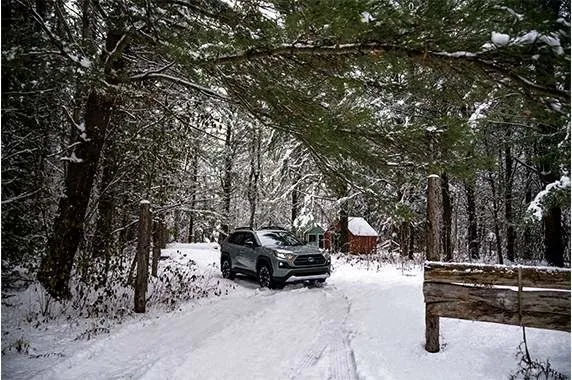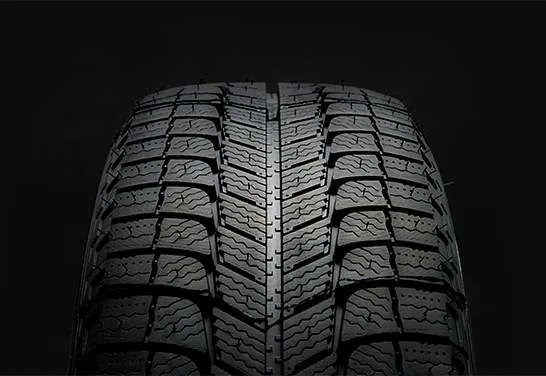7 Reasons to Switch to Winter Tires at 7 Degrees
In terms of safe winter driving, changing to winter tires is perhaps the most important thing you can do. So what’s the right time to switch them over? The answer is actually simple: 7 degrees Celsius – and here are 7 reasons why.

1. The rubber used for winter tires work best at 7 degrees or below
Winter tires are made from a softer rubber compound than summers or even all-seasons. Harder rubber compounds get even harder in cold temperatures, so they lose their traction and ability to ‘stick’ to the pavement (which also hardens considerably in the cold). The magic number where winter tires grip better than all-seasons is, you guessed it, 7 degrees Celsius. Below that temperature, summer tires are basically frozen pucks on the ice, while winter tires are cleats on boots.
2. Cold surfaces provide less traction
You know how asphalt gets a little sticky in extreme heat? Road surfaces are the opposite for tires in extreme cold. And Canadian winters aren’t exactly known for dry, easy-driving conditions. Winter tires are specifically made to grip on to cold and wet road surfaces.

3. Deeper treads gives you more bite in the snow
As a Canadian you know that snow doesn’t exactly wait for an invitation – it shows up one night, and now your morning commute just turned into an adventure. At 7 degrees Celsius we’re very close to that first surprise snow. And those deep treads on your winters are designed to bite through the snow to maximize the amount of rubber that touches the road surface, while simultaneously pushing the snow, slush, and rain away with every revolution.
4. Sipes and why you love them without even knowing what they are
You know those squiggly little grooves in your tires? Those are sipes, and they’re actually a brilliant feat of engineering. When the sipes on your winter tire rotate down and come in contact with the pavement, they open up like little pockets, and pull water into them. As the tire rotates, the sipes close, basically spitting the water droplets out behind the tire.
5. Hydrophilic rubber: more engineering genius
When it comes to contact with the road surface, moisture is essentially a lubricant – and moisture occurs even in the coldest conditions. On a microscopic level, the pressure of a tire on the road surface creates a small layer of water. Which is why Toyota-approved winter tires come with a hydrophilic coating, which essentially acts like a microscopic sponge, giving your winter tires more traction on ice and snow.
6. Shorter stopping distance means a much, much safer drive
Britain’s Auto Express Magazine tested a set of winter tires stopping on wet pavement at 7 degrees Celsius against summer tires. Full emergency ABS braking from 80 km/h produced stops of 35.5 metres for the winter tire equipped car, and 42.5 metres for the summer tire equipped car. That’s a 7 metre difference. Think about what sliding 7 more metres could mean in a dangerous situation, and the safety advantage of winter tires becomes soberingly apparent.
7. Micro bubbles are mega effective
All Toyota-recommended tires are effective. But the best of our tires boast yet another technology that gives you even better traction. Top winter tires are made with a special rubber formed from multi-cell compounds. Essentially, the tread rubber has tiny micro bubbles in them. As the tire wears, the little bubbles get exposed, which then act as bigger versions of sipes, taking water off the ice below the tire, and helping to reduce slippage.

Bonus Reason: So you can get out there and enjoy Canada!
Tubing. Snowboarding. Walks through a snowy forest. We think the best way to enjoy winter in Canada is to, well, get out there and enjoy winter in Canada. Toyota-approved winter tires give you the confidence and peace of mind to go anywhere you want, anytime you can. Where are you looking to go this winter?
